Harris Tweed - Traditions for the Future
How a fabric that's been produced for centuries meets modern sustainability standards
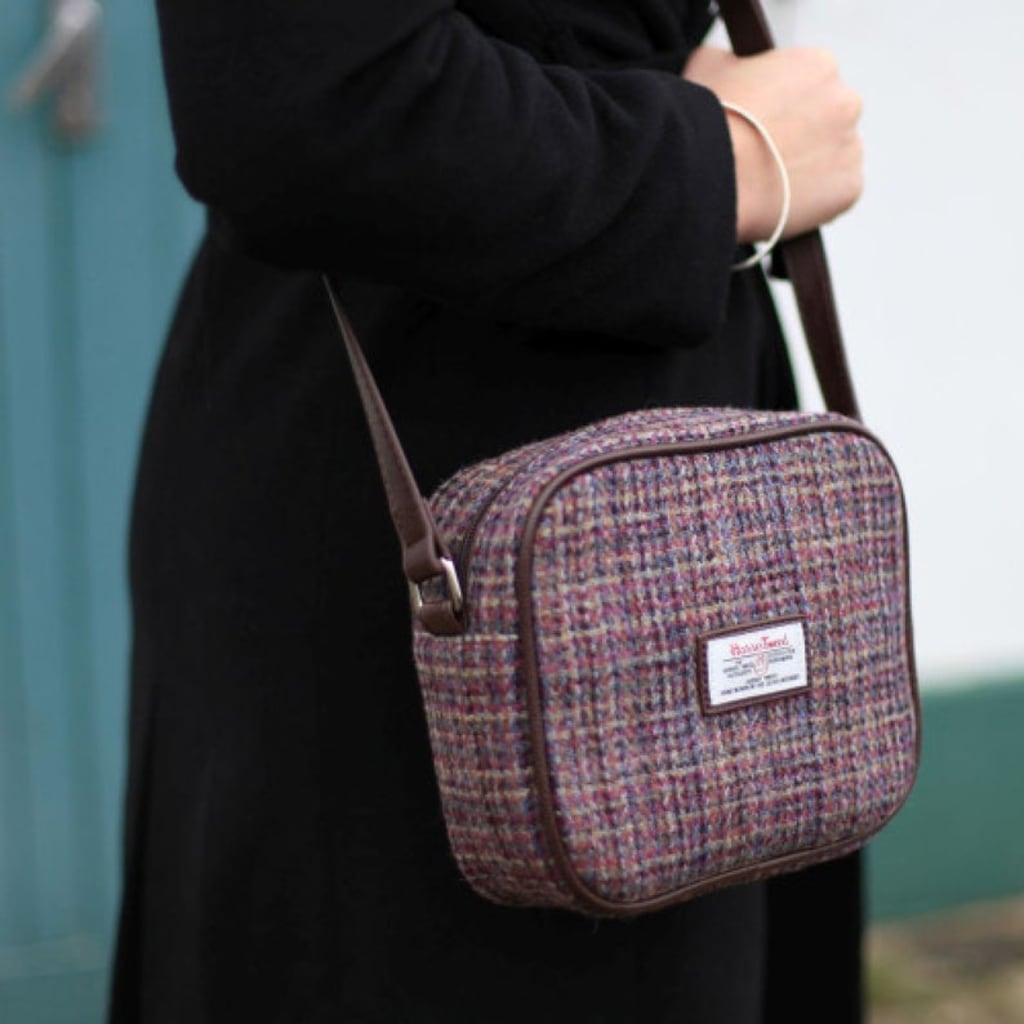
It's been nearly four months since my pledge to stop buying new clothes and, since unsubscribing myself from the email lists of all my former fast fashion favourites, it's hardly been a challenge. Charity shops are finally allowed to open again, the sun is tentatively shining, and I'm looking forward to being able to rummage around for summer dresses.
Ultimately, though, this is all a temporary measure. I don't mean that I'll be straight back on Boohoo on January 1st 2022; I mean that my buying clothes second-hand still relies on someone else having bought them first-hand. It's better to recycle these garments than to have them go straight to landfill, and it's better to hand my money to Oxfam or Cancer Research than to swell the Pretty Little Thing coffers, but even if thousands joined me tomorrow, it would be a treatment, not a cure.
Whether we like it or not, in the long run, we have to buy fewer clothes. (I know, ouch! I was hoping it wouldn't go this far too.) Luckily, there's a trendy new fashion movement here to save us: slow fashion. It advocates that instead of grabbing our way through dozens of £2 t-shirts we vaguely like, we wander carefully down aisles, browse online retailers in a leisurely fashion, and buy something people- and planet-friendly that we love. It's the fashion equivalent of eating out at a wonderful restaurant once a month, instead of shoveling McDonald's down your neck twice a week.
One easy way of being environmentally friendly is shopping locally, and that's why I've decided to start my investigation into how to improve my shopping habits for the future right in my own backyard, with Harris Tweed.
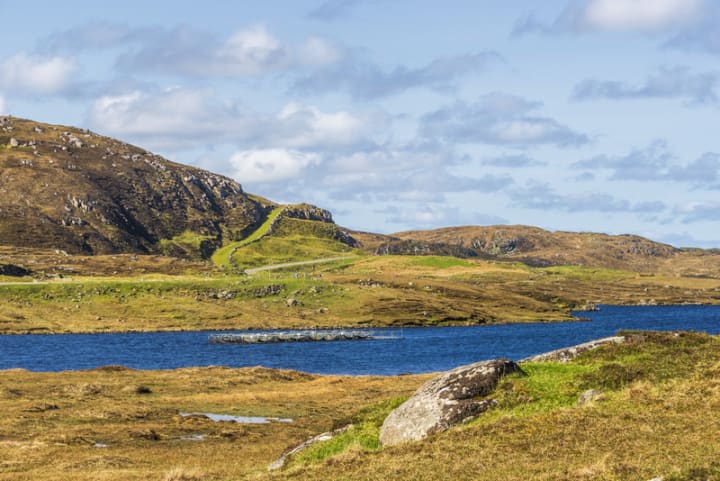
What is Harris Tweed?
Harris Tweed is a cloth woven from sheep's wool in the Outer Hebrides of Scotland. It can be used to make almost anything textile you can think of, except the aforementioned summer dresses. As a material, it is very much rooted in place, and real dress weather happens in the Hebrides maybe two days a year; tweed weather happens for the other 363.
I've seen Harris Tweed clocks, stuffed toys, keyrings and notepads, alongside more traditional garments like jackets and skirts. You can even buy Harris Tweed iPad covers.
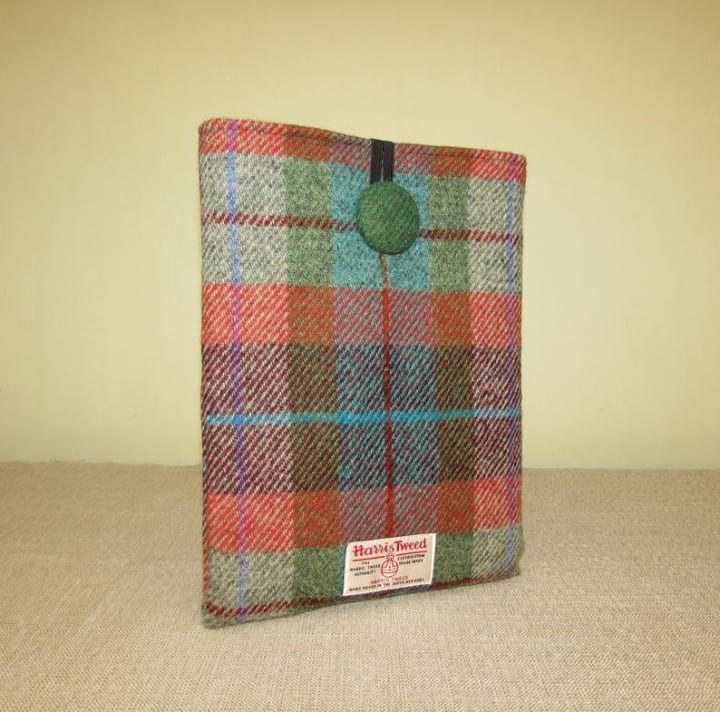
That little label you'll see on Harris Tweed products is the guarantee that the product is made from genuine Harris Tweed, crafted in the Outer Hebrides. Ever since the Harris Tweed Act of 1993, it's been illegal for any fabric without that symbol to be labelled Harris Tweed. In fact, it's a guarantee that half of your ethical research has already been done for you; read on to find out why Harris Tweed is a brand you should consider for your future sustainable shopping.
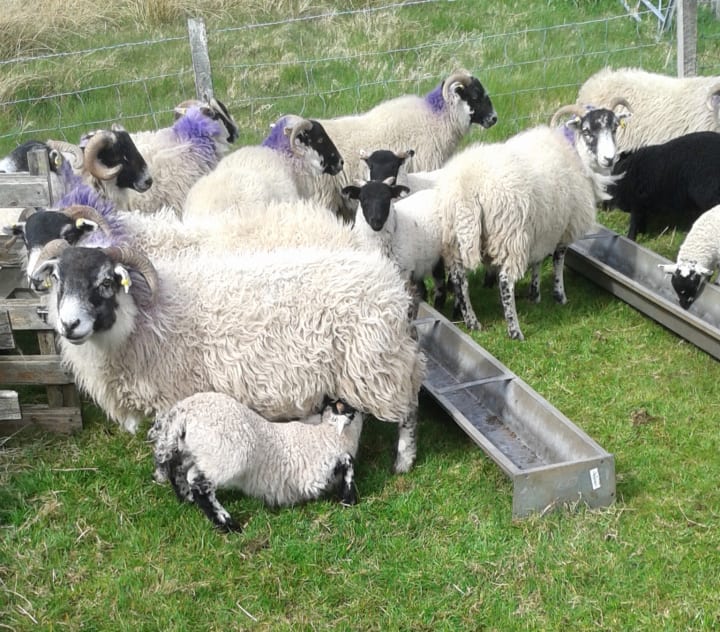
The Sheep
It all starts with them! Sheep in the Outer Hebrides have a pretty good time, if we compare their conditions to animal welfare standards. UK law in this regard is based around the concept of the 'five freedoms'. Animals are entitled to be free from hunger and thirst; discomfort; pain, injury or disease; and distress, while also being free to express natural behaviour.
The latter condition is easy: sheep in the Outer Hebrides live outdoors with little human interference, and they get to pick and choose their own friends from among all the local flocks on vast areas of moorland called common grazings for most of the year. The sheep pictured above are my dad's, who I'm sure you'll agree are a healthy, if grumpy-looking, bunch.
They are identified by ear tags and coloured markings, but some crofters still give them names. Most of them are Scottish Blackfaces, a breed especially suited to the bleak landscape of the Hebrides, but the wool of other breeds, such as Cheviots, can also make it into the mix. The sheep need to be shorn annually; they will be miserable and matted in the warmer weather if they are not. In other words, shearing is necessary to ensure that sheep remain free from discomfort. This is generally done in one afternoon in the early summer; you can watch the process in the short film below.
In this video, which was filmed in 2007, the sheep are sheared with traditional hand shears. When I was a kid, this was still quite usual; nowadays, electric clippers are often used, which makes the process much quicker for the sheep. On the same day, they are given preventative medicines and checked over for illnesses or injuries before being allowed to run around again, thus ensuring that they remain free from pain and disease.
All that said, the demand for Harris Tweed is far too high for the sheep of the local area to meet it all by themselves, so sheep welfare across the whole of the UK has to be taken into account. Unfortunately, clear statistics on this topic are hard to come by, even in the places where you'd really expect them. I was kind of surprised to find the welfare standards page of the National Sheep Association was under construction, for example, especially as their 'Enjoy Sheep Meat' page certainly is not! Here's what I was able to cobble together.
Most sheep in the UK live outdoors, with simlar freedoms to those in the Outer Hebrides, though often on very different types of land. Different types of sheep are reared in different areas of the country. There are strict animal welfare standards for how they are treated.
Dehorning, the removal of sheep's horns, is illegal. However, tail docking and castration of male lambs are sometimes undertaken. Tail docking is thought to help prevent a painful and potentially deadly disease called fly strike, in which - skip this part if you've just eaten - flies lay their eggs in sheeps' tails. Obviously, these eggs hatch into maggots which then begin attacking the poor sheep. According to UK law, tail docking should only be performed if the lamb's tail extends to below the vulva in females, or the anus in males. It is most commonly performed using a rubber ring, which causes the excess tail to drop off naturally within a few weeks. It is painful, but less painful than being eaten alive by maggots.
Castration is a bit more obviously controversial, and not only because of the instinctive leg-closing response it causes for at least half the human race. It's also usually done with a rubber ring, and for many of the same reasons as it's done in pets: to prevent behavioural problems and reduce the need to separate the sexes. A surgical method exists, but research suggests it actually causes more pain and distress than the rubber ring. There are arguments against castration from both a welfare and a profit perspective; you can read more about it in the links I've provided under further reading.
Crofters/Farmers
Sheep farming is not a highly profitable business, in general, but as the majority of the industry's income in the UK comes from meat and farming subsidies that would exist even if wool sales stopped completely, I'll focus in this section on the prices for wool itself.
Unfortunately, the picture is bleak. The price of wool has been in decline for some time and pandemic-related problems in 2020 completely floored it, sending the prices down to less than 25p per fleece. Even if the labour costs of shearing were totally discounted, the transport and packing of fleexes for sale often amounts to more than that, so farmers actually make a loss on the sale of wool. This year, thousands of them decided to cut their losses and burn or compost their wool rather than lose by selling it.
However, it's arguable that the low price of wool is not inevitable and would increase if more of us were buying it. Given the increasing popularity of sustainable fashion, this may well happen in future; and British wool performs a lot better than other natural materials in terms of workers' rights. The cotton industry, for example, is massively tainted by slavery and indentured servitude in Uzebekistan and China, among others.
In the Outer Hebrides, almost nobody relies on sheep farming for their income. Instead, they practice crofting - small-scale farming - to maintain tradition and their right to the land. This system is popular enough that there's a waiting list to acquire a croft, maintained by the Crofting Federation of Scotland.

Dyes and the Environment
Traditional dyes came from the local plants and flowers of the Outer Hebrides, such as the bilberries pictured above. However, many of the plants originally used are now protected by law and no longer made into dyes.
The modern substances used instead are all listed on the ZDHC, or Zero Discharge of Hazardous Chemicals list published by Road Map to Zero, an organisation which aims to eliminate the use of environmentally helpful chemicals. You can find out more about this initiative from the link under further reading.
The wool is never bleached; if a very light colour is required, it is simply not dyed.
The Workers
The wool starts off by being dyed in huge vats in the mill, after which it is handed to the weavers. Pandemic or no pandemic, they work from home on a loom that has barely changed in decades. When it is returned to the mill, it checked over and, if all is well, given the orb mark. You can watch the process in this video.
As Harris Tweed has to be produced in the Outer Hebrides, the industry is subject to all the rules and regulations of the UK as a whole, such as minimum wage and factory safety. You can rest assured that the people who make your clothes are safe at work and properly paid. Scandals like the Boohoo sweatshops in Leicester are not likely to come out of the Shawbost Mill!
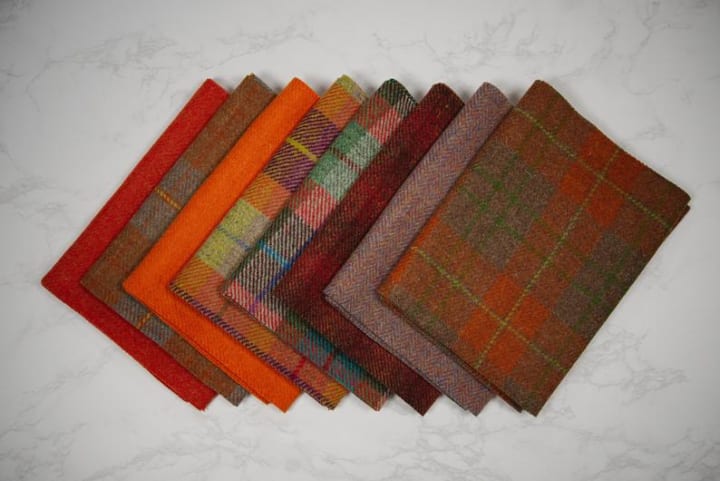
The Material
The resulting material is an adaptable, hardy material suitable for the coldest weather and almost any textile application you can think of. Searching Etsy alone, you can find everything from Harris Tweed face coverings (surely the ultimate meeting of tradition with the modern era) to furniture and clothing; although if you happen to reside on the island home of Harris Tweed, I'd recommend a real-life browing experience in a local retailer such as Tweedtastic. You're sure to find something you would never have thought of searching for!
Many Harris Tweed items are pricey - those of us used to Primark pricing might wince a bit, but it's worth comparing their longevity with your fast fashion aquisitions - many Harris Tweed garments last decades. Coupled with the material's fast growing reputation as a luxury fabric, they're well worth saving up for. When they finally are disposed of, the tweed itself is biodegradable.
If you really need more reasons to shop Harris Tweed, you can check out my Pinterest board devoted to Harris Tweed finds.
Happy browsing!
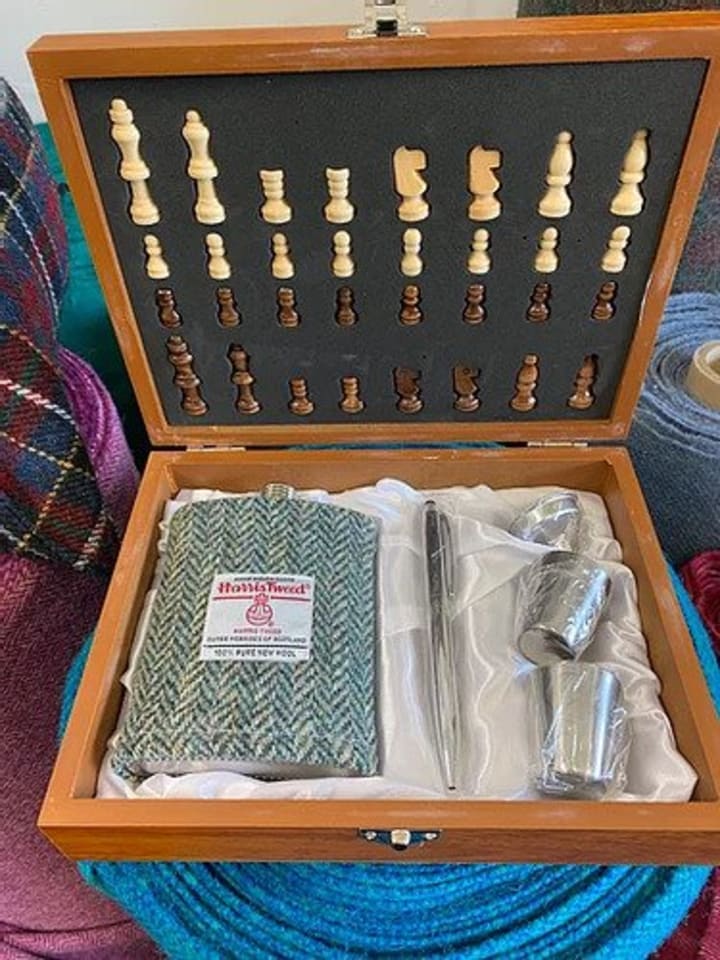
References/Further Reading
Bag (featured pic): TartanBunker on Etsy
General Information
A History of Harris Tweed: https://www.scotlandmag.com/history-of-harris-tweed/
The complete process of making Harris Tweed: https://www.harristweed.org/the-process/
Sheep:
Factsheets and resources about how British Wool ensures sheep welfare: https://www.britishwool.org.uk/animal-welfare-resources
Tail docking legislation (Scotland): https://www.nfus.org.uk/news/news/tail-docking-reminder-sheep-producers
Sheep welfare requirements (whole UK): https://assets.publishing.service.gov.uk/government/uploads/system/uploads/attachment_data/file/69365/pb5162-sheep-041028.pdf
Pros and Cons of Castration: https://www.fwi.co.uk/livestock/husbandry/livestock-lambing/pros-cons-leaving-male-lambs-entire https://www.bva.co.uk/media/3364/sheep-castration-tail-docking-and-pain-management-final.pdf
Wool Prices:
Farmers burning and composting wool, 2020: https://www.bbc.co.uk/news/business-53421546
Pre-pandemic fall in demand: https://www.bbc.co.uk/news/business-42229842
Dyes:
Traditional dyes: https://www.harristweed.org/journal/natural-dyes/
Modern dyes: https://www.harristweedhebrides.com/sustainability/our-mill/
Road Map to Zero: https://www.roadmaptozero.com/about
Biodegradability of dyes and cloth: https://www.harristweed.org/a-sustainable-industry/
About the Creator
TheSpinstress
I teach English, watch Bollywood, learn Hindi, herd cats, and don't buy new clothes. Follow me on the Spinstress for sarcasm and snacks; MovieJaadoo for Hindi film. :)
http://thespinstressblog.wordpress.com/
https://moviejaadoo.wordpress.com


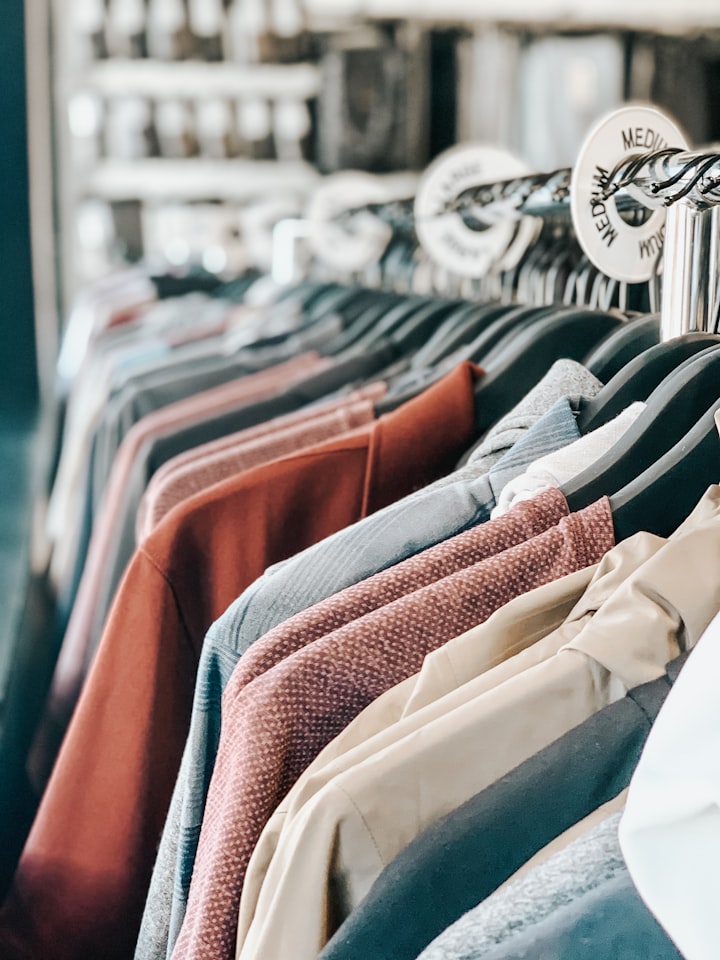



Comments
There are no comments for this story
Be the first to respond and start the conversation.